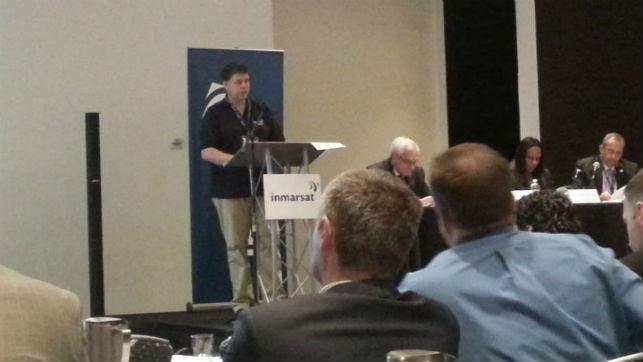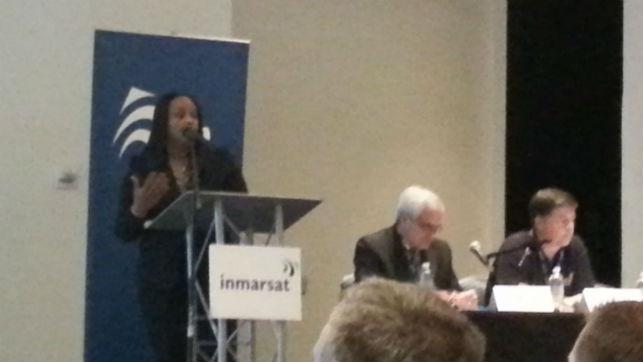[Exclusive] The Changing Face of Operations
Thoughts and Discussions from Smart Operations 2015
Approaching the 2015 Smart Operations Conference in Miami, the question on everyone’s mind was how to utilize new and emerging technologies to increase operational efficiency. Bringing together a discussion panel of maritime leaders spanning the shipping, port, satcom and software development fields, the conference focused on new capabilities now available to maritime and the issues preventing the widespread adoption of these technologies.
Background
As a preface to the discussions hosted at Smart Operations 2015, it is important to note some important statistics affecting the current state of the maritime industry:
• Ship to shore data has increased 50% over the last few years
• An estimated 500 million USD is spent on core fleet management applications every year
• Users across all major industries are underutilizing web-based technologies.
(Statistics provided in pre-conference briefing *sourced from Fraunhofer Institute and GL- Best Practice Shipmangement 2013)
Discussion
At the forefront of the panel discussion were new technological solutions to streamline workflow and increase operational efficiency. Conference host, Inmarsat Maritime, spearheaded the presentations by talking about their 5th generation of satellites, operating on the Ka-band frequency, which will start coming online this year. The goal of the new generation of satellites is to provide a high capacity, high speed communication network that can facilitate automated data gathering and real-time decision making. There was even a brief discussion of how this new wave of communication technology may start paving the way for drone ships as early as 2020.
 (Ronald Spithout - President Inmarsat Maritime)
(Ronald Spithout - President Inmarsat Maritime)
Following suit in the second half of the conference, maritime software developers, Tero Marine, Transas Marine and Inventory Locator Service each elaborated on technology designed to improve efficiency. Specifically, Tero Marine discussed their fleet management software that allows the user to view trends across their entire fleet including areas of efficiency and areas needing improvement for cost mitigation. Transas presented on their PMIS system, a single cloud based app that manages the flow of port operations from vessel call to integrated invoicing. Inventory Locator Service concluded the software discussions by speaking about innovations in the field of supply chain solutions that allow real-time access to suppliers and standardization of quote request documentation across their expansive network.
Port Everglades, based in Broward County, FL, directed their discussion on the expansion and innovation needed to keep up with the global market. This was highlighted in their 1.6 billion dollar capital investment plan geared at further increasing trade with South and Central America in the midst of the Panama Canal expansion project. At the forefront of the plan was the deepening and widening of the port’s main thoroughfares to accommodate larger vessels as well as adding four new cargo berths and five Post Panamex cranes.
 (Dr. Natacha Yacinthe – Principle Seaport Planner & Master Vision Plan Project Manager- Port Everglades)
(Dr. Natacha Yacinthe – Principle Seaport Planner & Master Vision Plan Project Manager- Port Everglades)
Finally, CMA CGM addressed a fundamental problem to the implementation of new technologies; the lack of organization and resources in many operating areas. Speaking specifically about the Central and South American regions, they brought to light the realities of a lack of infrastructure, poor technical equipment and facilities and a less than adequate plan for addressing poor security in many operating areas.
Conclusions
Following the panel and audience discussions, there were several notable consensuses made among the conference participants. Technology as a whole is becoming more and more ubiquitous every year and in order to compete in the market, companies must keep up with the latest advancements. Because of this, traditional shipping and maritime transportation as a whole are changing rapidly. Increasing availability of communications is moving some responsibility away from on-board to shore-side personnel. And, jobs that were once heavily paper-based, such as the mentioned example of the South Florida harbor pilots, will be moving more and more towards digital platforms.
On the opposite end of the spectrum, the increase in technology available has also created a noticeable lag in the actual implementation of it. This is largely due to a lack of overall efficiency in some operating areas of the world, and in order to amend this problem there need to be long term plans in place to systematically address each inefficient operational issue.
Additionally, many in the maritime community are leery of moving away from traditional paper-based systems, so in order to address this concern, software manufactures must be willing to make their products easily understandable and accessible at every level of the operational chain. Doing this ensures that everyone onboard a vessel can successful interact with the technology and carry out their job to the highest degree possible.

that matters most
Get the latest maritime news delivered to your inbox daily.
To learn more about the Smart Operations 2015 conference series, please visit:
https://www.fathomshippingevents.com/smart-operations-2015.html
The opinions expressed herein are the author's and not necessarily those of The Maritime Executive.
